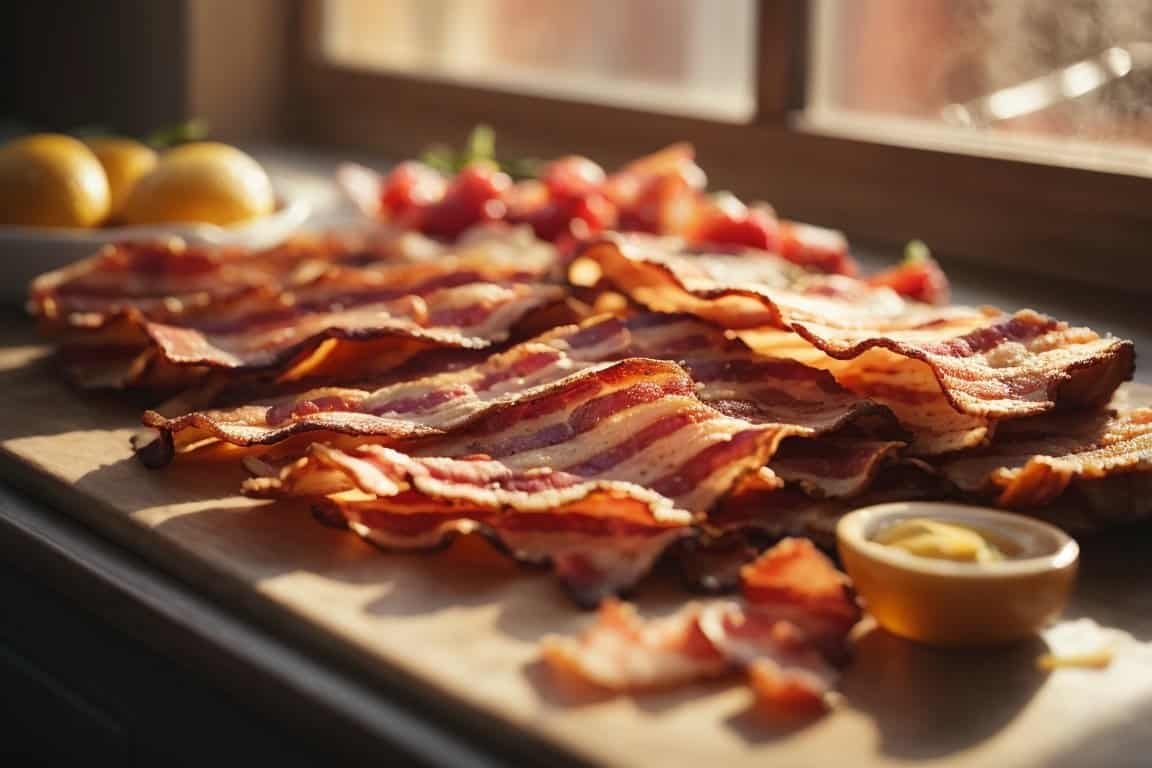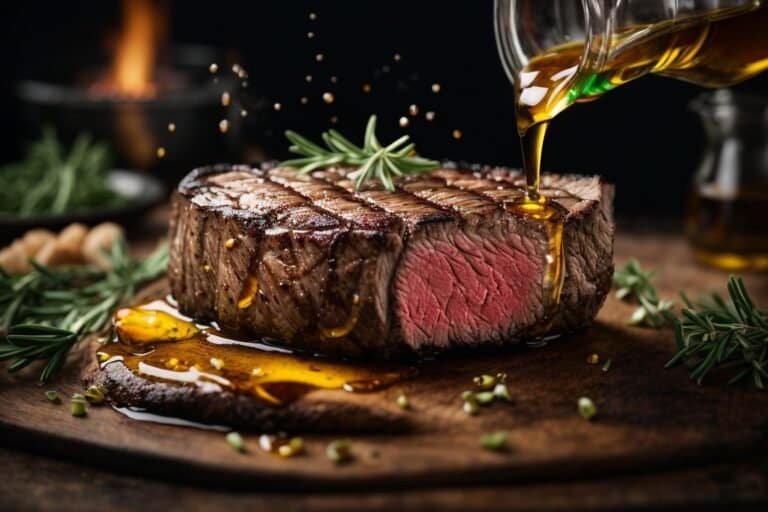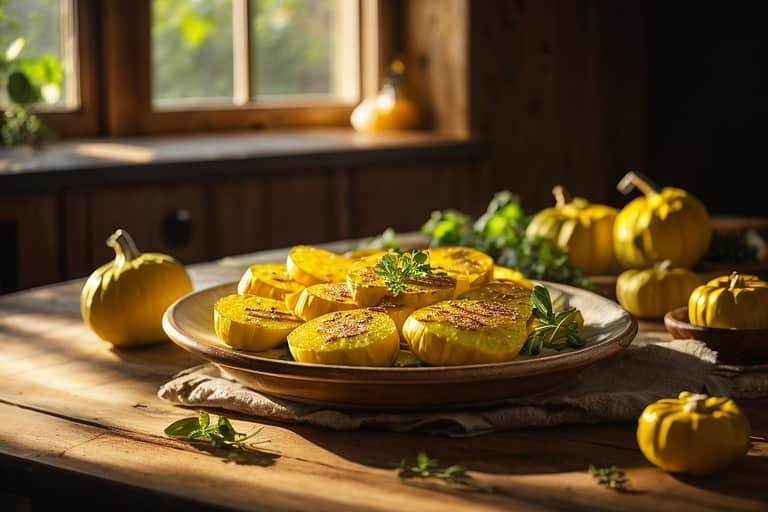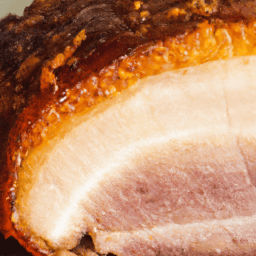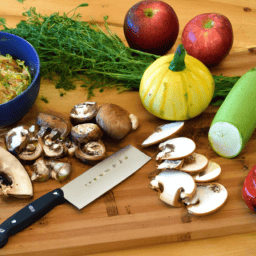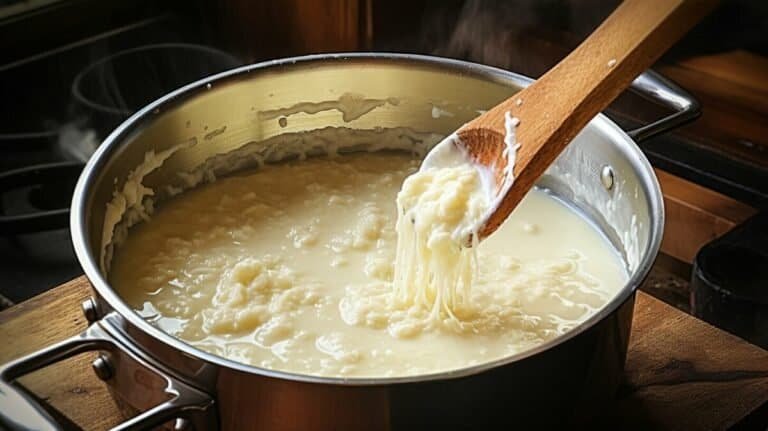Master How To Cook Bacon In The Oven: Why You’ve Been Doing It Wrong
If you’re still frying your bacon in a pan like it’s 1950, you’re not just behind the times—you’re missing out on a life-altering experience. I’m talking about how to cook bacon in the oven. Forget the splatter, the mess, and the inconsistent results. This is the way to achieve perfectly crispy bacon that’s not just good but transcendent. So, are you ready to elevate your bacon game to a level you never thought possible? Buckle up because we’re about to change your mornings forever.
Step-by-Step Guide: How to Cook Bacon in the Oven
- Preheat Oven: Preheat your oven to 400°F (204°C).
- Arrange Bacon: Place the bacon slices on a baking sheet, spaced apart for even cooking.
- Bake: Put the baking sheet in the oven and bake for 15-20 minutes. The exact time depends on the bacon’s thickness and how crispy you want.
- Monitor: Keep an eye on the bacon as it cooks. Remove it when it reaches your desired level of crispness. For softer bacon, look for a slightly bendable texture. For crispier bacon, wait until it turns golden brown.
- Optional Rotation: While not necessary, you can rotate the baking sheet halfway through for even cooking if you prefer.
- Handle Carefully: If you choose to rotate the bacon, use oven mitts to handle the hot baking sheet.
Advantages of Oven Baked Bacon
| Criteria | Oven-Baked Bacon | Fried Bacon |
|---|---|---|
| Cooking Time | 15-20 minutes | 5-10 minutes per batch |
| Grease Content | Lower (fat drips off) | Higher |
| Flavor | More even, crispy and chewy | Can be uneven, sometimes greasy |
| Convenience | Set it and forget it | Requires constant attention |
| Required Tools | Baking sheet, oven mitts, tongs | Frying pan, spatula |
Why Choose Baking over Frying?
When it comes to cooking bacon, the traditional method of frying in a pan may be what comes to mind. However, oven-baked bacon has some distinct advantages, making it a popular choice among home cooks. One of the main reasons to choose baking over frying is the convenience factor. Baking allows you to cook a large batch of bacon at once, saving you time and effort. No more standing over a hot stove, flipping individual slices of bacon. With oven-baked bacon, you can set it and forget it, allowing you to focus on other tasks in the kitchen.
Flavor Difference: Baked vs Fried Bacon
Another advantage of baking bacon is the difference in flavor it provides compared to frying. When bacon is baked in the oven, it cooks more evenly and becomes crispier. This results in a delightful texture that is both crunchy and chewy at the same time. The slower baking process also allows the bacon to retain more natural flavors, making each bite more flavorful and satisfying. So, baking is the way to go if you’re a fan of perfectly crispy bacon with an intensified taste.
Health Benefits: Lessened Grease Content
One of the biggest concerns with frying bacon is the excessive grease it produces. When bacon is fried, it often becomes greasy, leaving you with a heavy, oily feeling. On the other hand, the benefits of cooking bacon in the oven allows the excess fat to drip off onto the baking sheet, resulting in a lower grease content. This can be particularly beneficial for those looking to reduce their overall fat intake or for individuals with dietary restrictions. So, by choosing oven-baked bacon, you can enjoy the crispy goodness of bacon while controlling the grease content.
Essential Tools for Baking Bacon
Choosing Your Baking Sheet
Choosing the right baking sheet is important to ensure the best results when baking bacon. A sturdy, rimmed baking sheet is ideal as it prevents the bacon from sliding off and keeps the excess grease contained. Non-stick baking sheets are also a great option as they make removing the bacon from the pan easier without sticking. Additionally, consider the size of the baking sheet. If you’re cooking a large batch of bacon, you may need multiple sheets to accommodate the quantity.
Utilizing Aluminum Foil
Aluminum foil can be a useful tool when baking bacon. By lining your baking sheet with foil, you make cleanup a breeze. The foil catches all the grease drippings, eliminating the need for scrubbing and soaking your baking sheet after cooking. It also helps to prevent the bacon from sticking to the pan, ensuring easy removal once it’s done. However, if you prefer a crispy texture on the bottom of your bacon, you can skip the foil and place the bacon directly on the baking sheet.
Oven-Cooking Essentials: Tongs and Oven Mitts
When it comes to handling hot bacon and navigating the oven, having the right tools is essential. Tongs are the perfect tool for flipping bacon and arranging it on the baking sheet. Look for long tongs that will keep your hands away from the heat. Additionally, oven mitts or heat-resistant gloves are a must-have to protect your hands from burns when handling the hot baking sheet. Investing in these oven-cooking essentials will make your bacon-baking experience much more enjoyable and safe.
Choosing the Right Bacon

Understanding Different Bacon Cuts
| Type of Bacon | Flavor Profile | Best Cooking Method | Ideal Pairings |
|---|---|---|---|
| Lean | Less greasy, meatier | Oven-baking | Salads, sandwiches |
| Fatty | Rich, indulgent | Frying or baking | Breakfast, pasta dishes |
It’s important to understand the different bacon cuts available. The two most common cuts are lean bacon and fatty bacon. Lean bacon is typically made from pork loin and has less fat compared to fatty bacon, which is made from pork belly. Lean bacon tends to be less greasy when cooked and provides a leaner, meatier texture. On the other hand, fatty bacon is well-known for its rich and indulgent flavor due to its higher fat content. Choosing the right bacon cut is a matter of personal preference and the overall taste you desire.
Selecting Quality Bacon: What to Look for in Stores
When it comes to selecting bacon in the grocery store, there are a few key factors to consider. First, look for bacon that has consistent coloring throughout, without any gray or discolored spots. The meat should be evenly marbled with fat, as this contributes to the flavor and tenderness of the bacon. Additionally, avoid bacon slices that are overly thin or have visible chunks of fat. Quality bacon should have a good balance of meat and fat, resulting in a delicious and satisfying eating experience.
The Flavor Impact: Thick-Cut vs Regular-Cut Bacon
Another consideration when choosing bacon is the thickness of the slices. Thick-cut bacon has gained popularity in recent years, and for good reason. The extra thickness allows the bacon to retain its juiciness while still achieving that desired crispy texture when baked. Thick-cut bacon also tends to have a more robust, meaty flavor compared to regular-cut bacon. However, if you prefer your bacon on the thinner side, regular-cut bacon is still a great choice and will yield delicious results when baked.
Preparation Steps Before Baking
Preheating the Oven: The Perfect Temperature
Before you start baking your bacon, preheat your oven to 400°F (204°C). Preheating the oven ensures that the bacon cooks evenly and becomes crispy without burning. It also helps to render the fat, resulting in bacon that is less greasy. So, take a few minutes to preheat your oven to the perfect temperature before you begin preparing your bacon.
Layering Your Baking Sheet
Start by lining your baking sheet with aluminum foil or parchment paper. Ensure the foil or parchment paper covers the entire surface of the pan, leaving no exposed areas. This will make cleanup much easier and prevent any potential sticking or burning of the bacon.
Arranging Bacon on the Sheet for Perfect Crisping

Once your baking sheet is prepared, it’s time to arrange your bacon. Lay the bacon slices flat on the baking sheet, making sure they are spaced apart to allow for even cooking. Avoid overlapping the bacon slices as this can result in uneven cooking and steaming rather than crisping. Taking the time to arrange the bacon properly will ensure that each slice bakes up perfectly crisp and delicious.
The Art of Flavoring Your Bacon
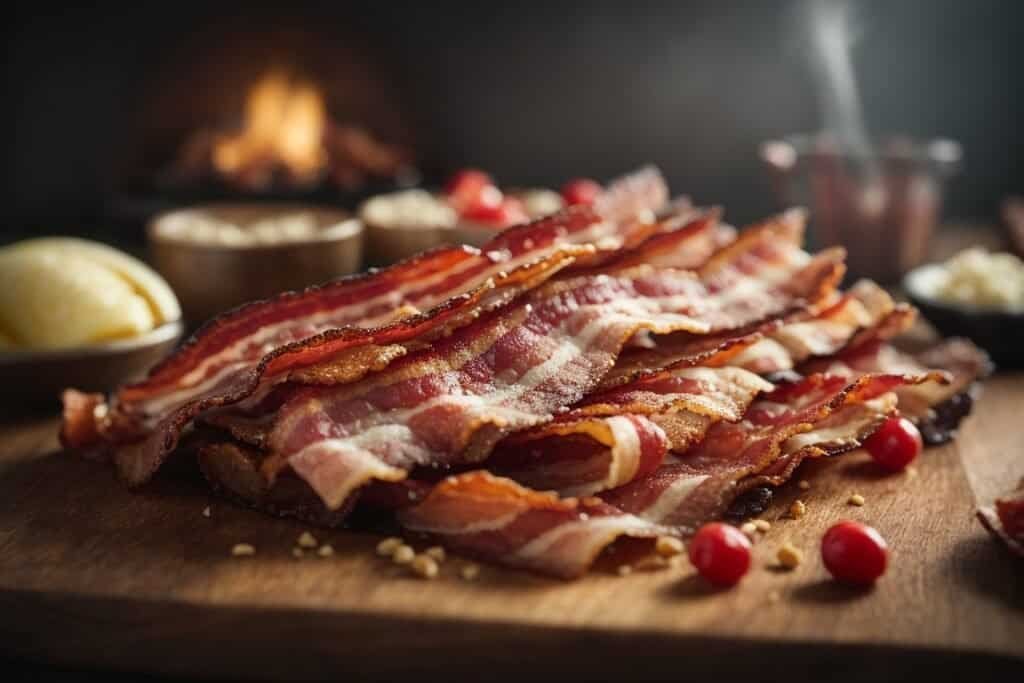
Play with Flavors: Honey Glazed, Peppered, Maple Bacon
| Seasoning | Impact on Flavor | Suggested Dishes |
|---|---|---|
| Honey Glaze | Adds sweetness | Breakfast plates, appetizers |
| Black Pepper | Adds a spicy kick | Sandwiches, salads |
| Maple Syrup | Sweet and smoky | Pancake breakfast, bacon desserts |
Seasoning bacon before baking can elevate its flavor, making it more versatile for different dishes. While it adds complexity, be cautious with seasonings that contain salt to avoid over-salting. For a sweet touch, try a honey glaze; for a savory kick, use cracked black pepper; and for a blend of sweet and smoky, drizzle maple syrup over the bacon before baking.
Tips for Even Flavor Distribution
Before adding any seasonings, pat dry the bacon slices with a paper towel to remove any excess moisture. This will help the seasonings adhere better and prevent any clumping. If you are using a dry seasoning, you can rub it directly onto the bacon slices. Use a basting brush to apply an even layer of liquid seasonings, such as honey or maple syrup. Taking these extra steps guarantees that each bite of your flavored bacon is delicious.
Safe Handling and Storage of Cooked Bacon
After baking bacon, cool it on a plate with paper towels to absorb excess grease and maintain crispiness. For leftovers, store them in the fridge for short-term use or in the freezer for up to 3 months. To reheat, use a skillet or microwave for refrigerated bacon, and thaw frozen bacon in the fridge before reheating. Avoid using the oven for reheating to preserve texture.
Troubleshooting Common Pitfalls
| Common Issues | Solutions |
|---|---|
| Bacon sticking to sheet | Line baking sheet with aluminum foil or parchment paper |
| Uneven cooking | Flip bacon halfway through or rotate baking sheet |
| Oven splatter | Use an oven-safe splatter guard to contain grease |
Bacon Serving Suggestions
Perfect Pairings: Foods That Complement Bacon
While bacon is delicious on its own, it also pairs exceptionally well with a variety of other ingredients. One classic pairing is bacon and eggs, which create a satisfying breakfast or brunch combination. Bacon is also versatile in salads, adding a salty and smoky element. Try crumbling crispy bacon into your favorite salad for an extra boost of flavor. For sandwich enthusiasts, bacon takes sandwiches to a whole new level. Whether it’s a classic BLT or a gourmet creation, bacon elevates the taste and adds a delightful crunch. Bacon also works wonders in pasta dishes, adding a rich and savory touch. Experiment with different pairings and let bacon be the star of your culinary creations.
Warming Up to the Idea of Bacon as a Meal
While many of us think of bacon as a breakfast or brunch staple, it can also be transformed into a main course. Bacon-wrapped dishes are popular, with options such as bacon-wrapped chicken, bacon-wrapped asparagus, or even bacon-wrapped dates stuffed with cheese. These dishes showcase the versatility of bacon and provide a satisfying and flavorful meal. Bacon can also be incorporated into pasta dishes, casseroles, or as a topping for burgers and pizzas. Embrace the idea of bacon as a meal and let your creativity run wild in the kitchen.
Bacon in Salads, Sandwiches, and Other Dishes: Expanding Your Culinary Horizons
In addition to being a standout ingredient on its own, bacon can be used to enhance a wide range of dishes. Adding bacon to salads brings a burst of flavor and a satisfying crunch. Whether it’s a simple green salad or a more complex grain-based salad, bacon takes it to the next level. When it comes to sandwiches, bacon is a classic addition that adds a smoky and savory element. From classic club sandwiches to gourmet creations, bacon brings a depth of flavor that is hard to resist. Don’t limit yourself to traditional uses of bacon – experiment with incorporating it into pasta dishes, appetizers, and even desserts for a unique and unforgettable culinary experience.
Bacon Recipes You Must Try
The Classic Bacon and Egg Breakfast
Start your day with oven-baked bacon and eggs cooked to your liking. Pair with toast and fruit for a complete meal.
Gourmet Bacon-Wrapped Dishes
Elevate your cooking with bacon-wrapped scallops or filet mignon. Serve with roasted veggies or salad for a special meal.
Unexpected Bacon Creations
Explore unique dishes like bacon jam or bacon-wrapped jalapeno poppers. Perfect for gatherings or as a tasty snack.
Additional Bacon Recipe Ideas
- Bacon Cheeseburger Soup
- BLT Eggs Benedict
- Bacon-Wrapped Pork Tenderloin
- Baked Bacon
- Broccoli Salad with Bacon
- Candied Bacon
FAQ on How to Cook Bacon in the Oven
Q: Why should I cook bacon in the oven instead of frying it?
A: It’s less messy, allows for more even cooking, and is ideal for cooking large batches. The oven’s consistent temperature ensures each slice cooks uniformly, eliminating the problem of some pieces being overcooked while others are undercooked.
Q: What temperature should I set the oven to?
A: Preheat your oven to 400°F (204°C). This temperature allows for optimal cooking, balancing both speed and crispiness.
Q: How long does it take to cook bacon in the oven?
A: The cooking time varies depending on the thickness of the bacon and your desired level of crispiness. Generally, it takes about 15-20 minutes. It’s a good idea to start checking the bacon around the 10-minute mark to adjust the cooking time as needed.
Q: Do I need to rotate the bacon while it’s in the oven?
A: Rotating the bacon is optional. The oven’s even temperature should cook the bacon uniformly. However, if you have concerns about hot spots in your oven, you can rotate the baking sheet halfway through the cooking process.
Q: How can I tell when the bacon is done?
A: The bacon is done when it reaches your preferred level of crispiness. For softer bacon, look for a slightly bendable texture. For crispier bacon, wait until it turns golden brown.
Q: What equipment do I need?
Answer: You’ll need a rimmed baking sheet, aluminum foil or parchment paper, and tongs. Optionally, you can use a cooling rack to place inside the baking sheet if you want the grease to drip off the bacon.
Q: Can I season the bacon before cooking it?
A: Yes, you can season the bacon with spices like black pepper or even sweeteners like maple syrup to add extra flavor.
Q: What should I do with the leftover bacon grease?
A: If you line your baking sheet with aluminum foil, you can easily collect the bacon grease for use in other recipes. Store it in a jar in the fridge for future cooking.
Q: How do I store cooked bacon?
A: Allow the cooked bacon to cool, then store it in a zip-top bag in the fridge for up to 3-4 days. You can also freeze cooked bacon for up to 2-3 months.
Q: Can I cook turkey bacon in the oven?
A: Yes, turkey bacon can also be cooked in the oven. However, it cooks faster than pork bacon, usually in about 10-12 minutes, so keep an eye on it to avoid overcooking.

